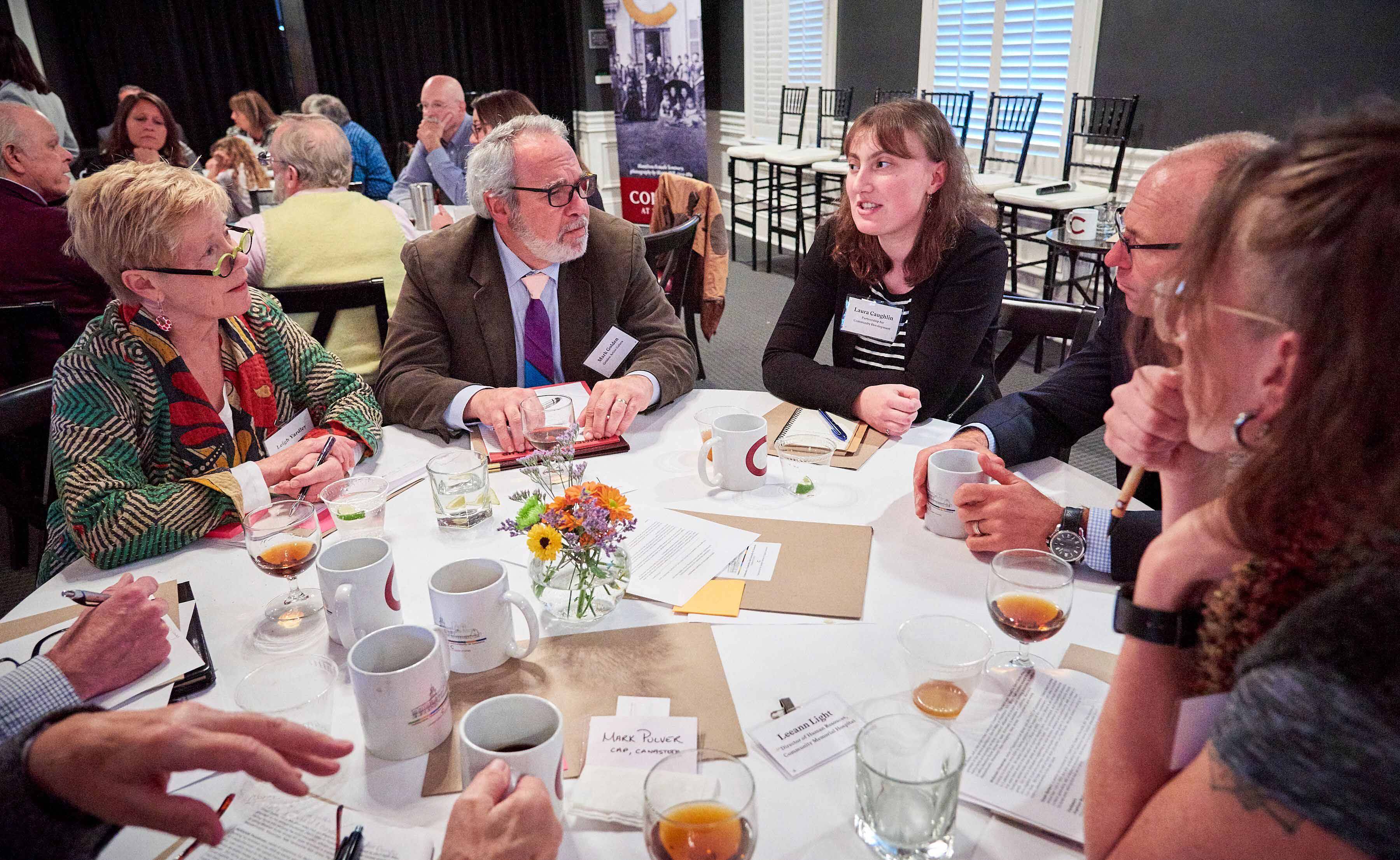Regional leaders in business, economic development, education, and non-profit agencies gathered for the Collaboration, Cooperation and Community for Commerce (4C) conference, Friday, Oct. 25.
The event, designed to create concrete working plans for regional economic development, featured three panels focused on cooperation in workforce development, collaboration in financing, and community branding and marketing.
Sponsored by John Golden ’66, a former chair of the Colgate University Board of Trustees, participants shared stories of rural development models from other areas of the state and talked about local enterprise success stories. A graphic facilitator produced artwork highlighting key findings and ideas developed during the full-day event.
“This format is to collectively envision the future of north Chenango and southern Madison counties,” said Colgate Professor and Upstate Institute Director Lynn Schwarzer. “We wanted to think about the future of economic development, and specifically, what does this area look like 10 years down the road?”
Mark Golden, CEO and co-founder of Golden Artists Colors in New Berlin, NY, who introduced the first panel discussion, said “None of these folks think small in terms of what we can do in the community and what we can accomplish. We could spend all day complaining about the problems we all face... but I will share with you folks that we do not need to be fixed, and we are not helpless to make change.”
Golden shared the success of his company’s Employee Stock Ownership Program (ESOP), which has given his employees a sense of pride in being invested in at their workplace.
Yusuf Harper, co-owner of the organic farm Norwich Meadows, said his company found success through shrewd market research and customer service.
“We didn’t understand farming, but we did understand markets. That made us somewhat unique. The key to our success has been understanding our customers and delighting our customers,” Harper said.
Newly appointed Canastota Central School Superintendent Shawn Bissetta said area residents should think twice before they say there are not a lot of good jobs to be found. Bissetta said he constantly hears from employers who are desperate for qualified employees. In response, he said it is important for educators to think about ways they can help address the needs of area employers.
“We need to create flexible pieces of learning,” Bissetta said.
For Julie Dudrick, Upstate Institute project director, the full-day event was an important moment to pull together many officials who often work on similar efforts, but are simply separated by county lines.
“I think people were energized by the day; by hearing about the smart and successful ideas that are working in our community, and by learning more about what is happening around them. There are certainly some differences between the two counties, but we have a lot to learn from each other as well, and hopefully, this is a solid first step toward a more collective vision for what this area will become,” said Dudrick.
Following the full-day event at the Colgate Inn, participants gathered at the newly renovated Hamilton Movie Theater for a community panel discussion with 22nd Congressional District Rep. Anthony Brindisi, Colgate President Brian W. Casey, SUNY Morrisville President David Rogers, and Cazenovia College President Ron Chesbrough.
The congressman and presidents addressed questions related to equine programs at Morrisville and Cazenovia, how local colleges connect with area native peoples, and the future of higher education in the region’s economic development progress. Colgate Professor Emerita Jane Pinchin moderated the discussion.
“We have 1,000 employees at Colgate. It’s $121 million a year in salaries and benefits that go back into the community, so we’re not a small actor,” Casey said. “...I think we have a profound obligation to speak of our mission. Education is a public good. The education and development of the next generation of students and scholars is an obligation to the state.”
